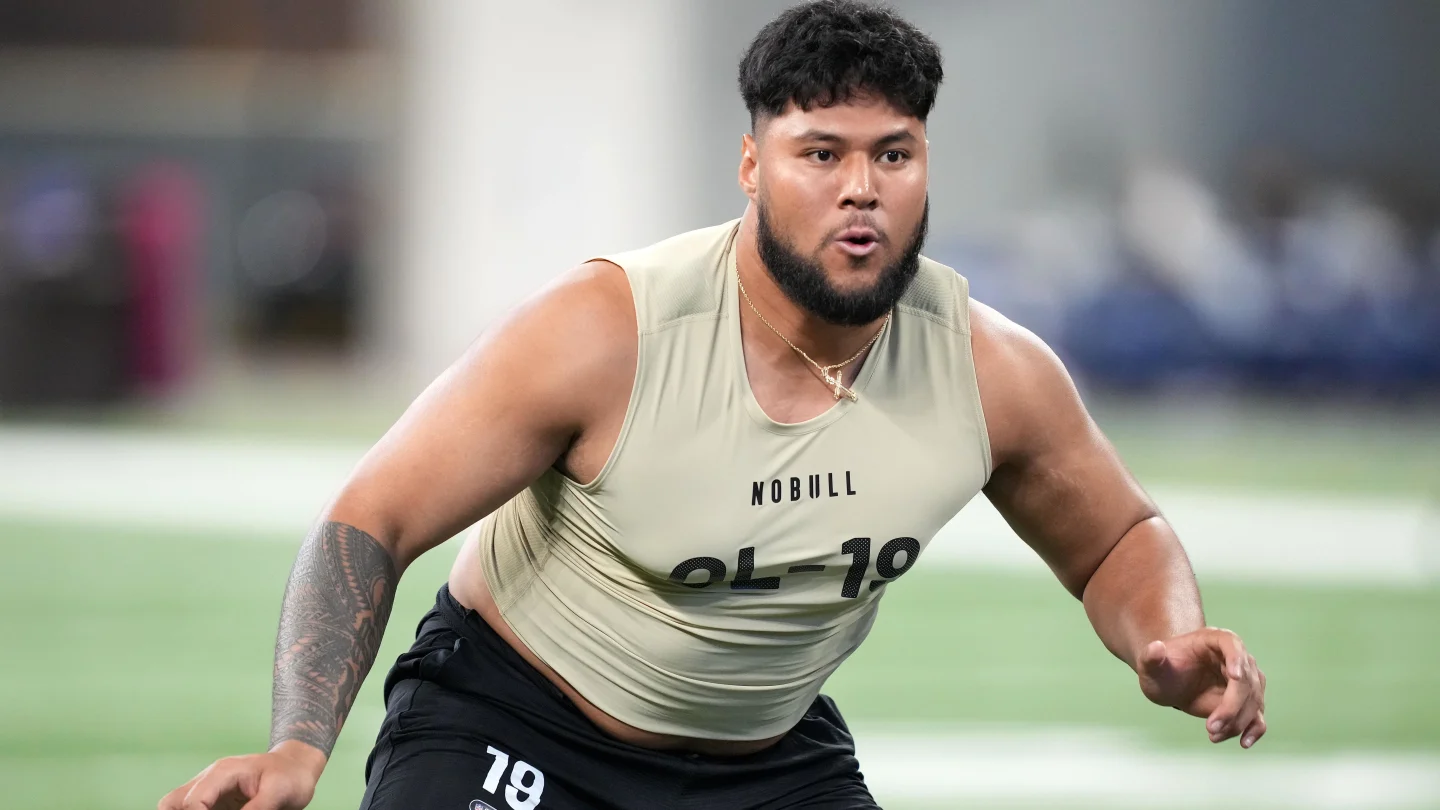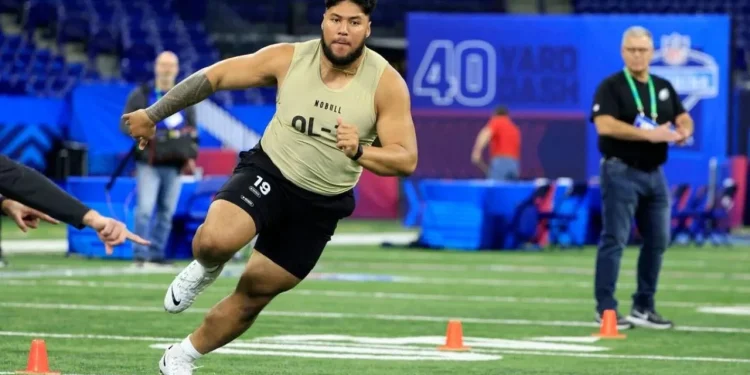In the ever-competitive landscape of the NFL, the Pittsburgh Steelers’ recent maneuvers on their offensive line have sparked discussions and concerns among fans and analysts alike. The team’s handling of their young talents, particularly 2023 first-round pick Broderick Jones, is proving to be a contentious strategy that could have lasting repercussions.

Broderick Jones A Talent in Limbo?
The Pittsburgh Steelers made a decisive move in the 2024 NFL Draft by selecting Troy Fautanu , an accomplished offensive tackle from the University of Washington, with their 20th overall pick. Fautanu, a Joe Moore Award recipient, is naturally a left tackle—the same position Broderick Jones was drafted to anchor just a year earlier.
This overlap has led to a complex situation, with Jones now experiencing shifts between positions that might not only affect his development but also signal deeper strategic shifts within the team. According to Alex Kozora of Steelers Depot, the Steelers are currently testing Jones at both left and right tackle positions during their organized team activities (OTAs).
This approach has reportedly left Jones feeling “uneasy” as the team remains “uncertain” about his optimal placement. “Jones was initially drafted to be the long-term blindside protector,” Kozora notes, highlighting the pivotal role Jones was expected to fill.

Pittsburgh Steelers Draft and Its Implications
The drafting of Fautanu has raised eyebrows, primarily because it appears to undermine the role that Jones was supposed to grow into. After an injury to teammate Chukwuma Okorafor last season, Jones was moved to right tackle out of necessity—a position he maintained for the remainder of the year.
While this shift was initially temporary, the introduction of Fautanu has complicated the scenario, leading to what some might describe as a “messy situation.” Steelers General Manager Omar Khan has commented on the situation, indicating a plan for Jones to eventually return to the left tackle spot.
However, the ongoing experiments during OTAs, which have even seen Fautanu taking reps at right tackle, suggest a level of indecision that could be detrimental to both players’ development.

Pittsburgh Steelers Risks of Roster Roulette
The Steelers’ strategy raises significant questions about the optimal development path for young linemen. Shifting players between such crucial positions can disrupt their adaptation to the professional game and potentially hinder their performance.
Jones, who struggled in his rookie year with a Pro Football Focus grade of 60.7, is a prime example of a talent needing stability to refine his skills. Pittsburgh’s approach of playing what some might call “musical chairs” with their linemen positions, particularly with young, developing players like Jones and Fautanu, could be seen as a risky gamble.
This strategy may keep both players from getting the necessary reps at one position to truly excel, which is critical in their formative years in the league.

Delicate Balance for Pittsburgh Steelers
As the Steelers navigate this transitional period, the decisions they make now will heavily influence their offensive line’s stability and effectiveness in the coming seasons. The challenge lies in balancing the need to explore the full potential of their roster while ensuring that each player receives the focused, consistent training required to succeed.
The outcome of this high-stakes lineman shuffle will not only impact the players involved but could also define the team’s fortunes as they strive to remain competitive in the fierce battleground of the NFL.
Source: fansided









